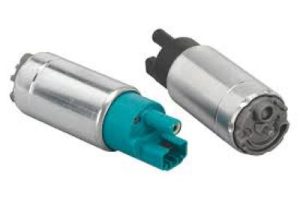How to Test a Fuel Pump Diagnosing fuel pump failure starts with checking fuel pressure using … Read more Read Currently, the vast majority of fuel-injected engines require 40-60 psi. If fuel pressure is below the manufacturer specification, then it could very well be failing altogether. For instance, a 2015 Ford Mustang may only provide 30 psi of fuel pressure rather than the required 55 psi, causing starting to be difficult or making the car fail to run properly. Low fuel pressure might cause hard start, misfire and/or stalling at high speeds.
Then, testing the fuel pump's electrical circuit is a key area. The pump needs a steady 12-14 volts to work at its full potential, and any drop in voltage could mean the fuel delivery is reduced by around 20%. The best way to determine the underlying cause is to test voltage at the fuel pump's electrical connector using a multimeter. A reading of less than 12 volts usually means an electrical, rather than a mechanical problem.
Another way to check lift pump failure is noise. An average fuel pump hums quietly. But if the pump is going bad, you could experience a loud whine or buzz indicating that it is worn or the internal components are damaged. It makes the noise most apparent when you are hard on the throttle, or if you are nearing empty and the pump has to work harder to deliver fuel.
Engine performance also may be affected, including loss of power or poor fuel efficiency if the fuel pump is failing. If low pressure is not enough to supply the engine with fuel, then during hard accelerations, long ascents up a hill or running flat out at high speeds (think Autobahn) the vehicle can lose power. On the other end of the spectrum, a pump that loses 10-15% of its fuel flow (displacement) in a high-performance vehicle such as a turbocharged Subaru WRX could see enough power lost from the drop to accelerate/maintain speed on freeway ramps and passes that it would need immediate attention.

In addition, fuel pump failure can result from fuel system leaks because they limit the amount of fuel getting to the engine. Fuel lines and connectors can........ a bad pump caused by outside forces A leaking fuel line can lower the pressure by 5-10 psi, not a whole lot, but enough that it may not cause an immediate problem, but reduce performance and eventually burn out the pump if left to run dry regularly.
If the fuel pump completely fails, your engine may not get started at all. In that case, one of the next questions becomes whether or not you heard the fuel pump running. — When this is the scenario, checking for a blown fuel pump fuse or relay is an important step 2000 Chevrolet Monte Carlo(UIAlertAction #4) From Wikimedia Commons If the fuse is blown the pump will not get power and it simply won't work (even if in perfect condition), same with a bad relay. Most of the times, simply changing the fuse or relay will solve this problem but continuous failure can reflect deeper issues such as a defective fuel pump drawing more current.
Running a fuel pump flow test will tell you exactly how much fuel is being delivered by your pump. This means that if a stock fuel pump should be capable of flowing around 200-300 litres per hour (LPH), and the pump is only returning 150 LPH, chances are the pump is clogged or worn out. Performance cars may require 400 LPH or higher fuel pumps to compensate for engine upgrades, and a restrictor of any size can cause serious power loss.
You can read more about diagnosis and solutions on how to replace or upgrade your Fuel Pump HERE.